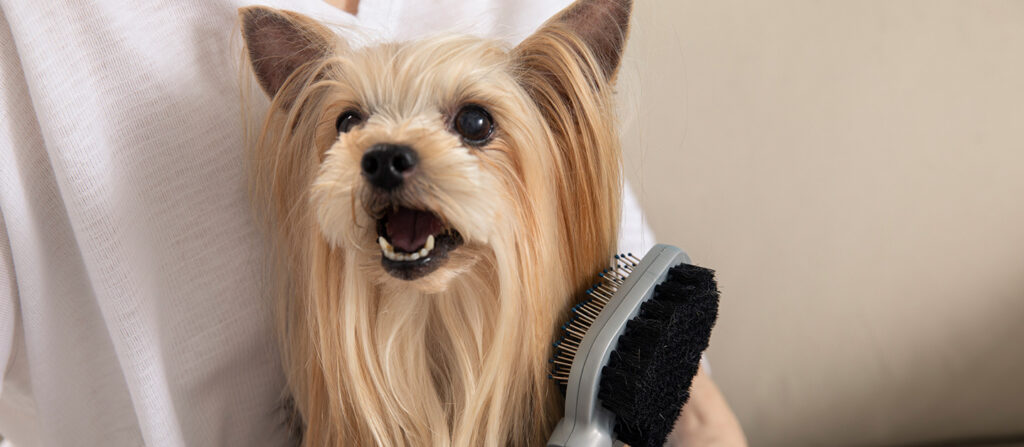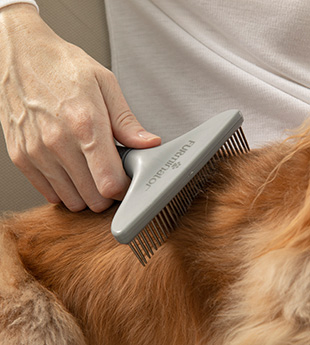
BRUSHING DAILY YOUR PET
Brushing your pet’s fur is important to maintain the good condition of their coat and help reduce unwanted fur around your home. It also helps to strengthen the special bond between you and your pet. Here are some tips for how to groom your pet effectively.
DAILY REGIME
You brush your hair every day, but would you think of doing the same for your pet? Daily grooming helps to keep your pet’s skin and coat healthy and keeps them looking their best.
Grooming not only removes excess hair that falls out during the course of a day, it also removes any dust and debris that your pet may have picked up on their daily adventures!
Another benefit of daily grooming is that it will help you to pick up on anything that might be affecting your pet. You can check the skin and body for any unusual lumps or bumps, or find any fleas or tics that might have made a home for themselves on your pet’s body.
Brush your pet at the same time each day – perhaps when all of the day’s chores are done and you’re settling down on the sofa to relax in the evening. This daily ritual will help your pet feel comfortable and relaxed, and it’s great for decreasing your stress levels too.
HAIRBALL REDUCTION
Cats are excellent natural groomers but their cleaning routine can lead to hairballs; clumps of swallowed fur which become stuck in their digestive tract. Daily grooming can help to reduce uncomfortable hairballs by reducing the build-up of fur on your cat’s coat.
REDUCE SHEDDING
Daily grooming will also help you to ensure that your pet’s fur ends up in the bin rather than all over your home. It helps to remove the daily layer of fur which your pet sheds, so it doesn’t get transferred to cushions, rugs or your favourite pair of jeans!
Combined with deShedding on a weekly basis, grooming your pet can help to keep those pesky ‘Shedlings’ under control.
HOW TO GROOM YOUR PET
Firstly, choose a brush that’s the right size and texture for your pet. Then, starting at your pet’s head, gently stroke the brush down the body towards the tail in the direction that the fur grows. Take care not to brush too hard as this can damage your pet’s skin.
Brush the chest and abdomen last and take particular care in this area as the fur can be thinner and the skin more sensitive.
If your pet has very long hair you may need to use a comb or grooming rake to tease out any tangles or mats before brushing through the rest of the coat.
Some pets take to grooming more easily than others. If your pet isn’t too keen on being groomed, check out our tips on how to introduce a daily grooming regime.















